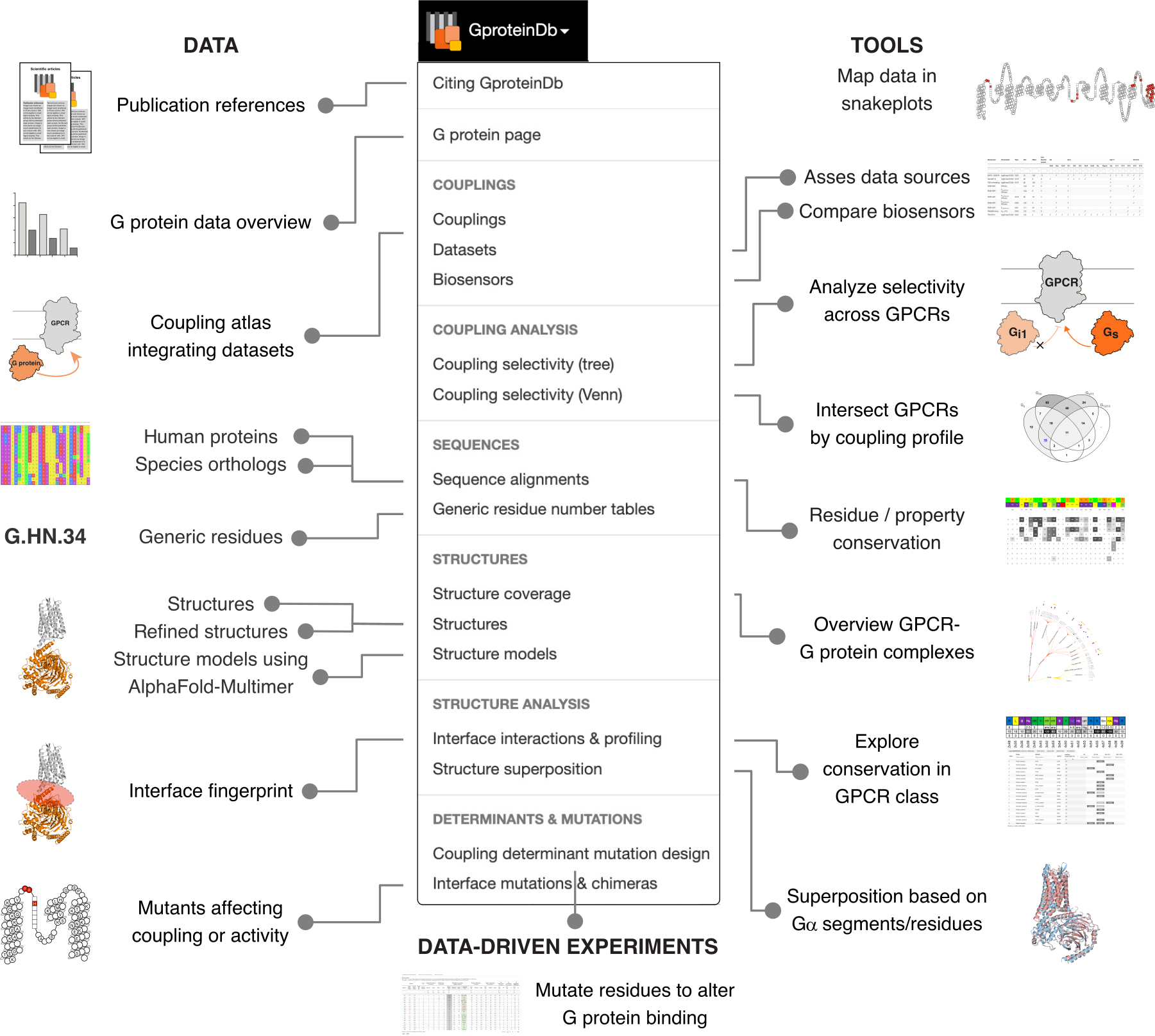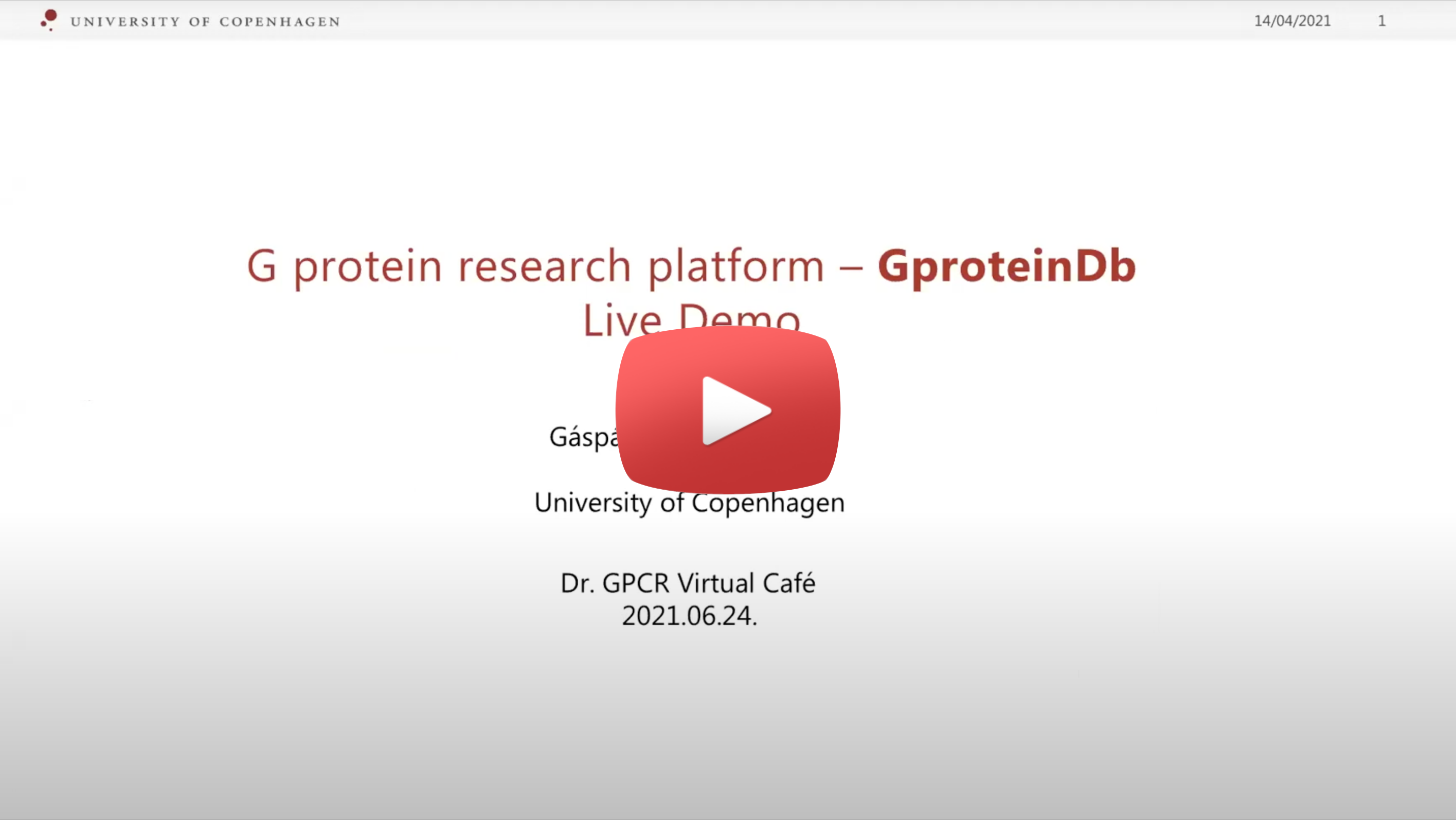Data
- Sequences
- 16 Human G proteins
- 317 Species orthologs
- Couplings
- 3,052 G protein couplings
- Structures
- 1,128 G proteins
- 1,007 G protein complexes
- 539 Generic residues
- Structure models
- 5,594 G protein complexes
- 376 Refined complexes
- Structure interactions
- 379,219 G protein interface
- Mutations
- 54 Interface mutations
Overview

Related resources
GPCRdb, GproteinDb, ArrestinDb and Biased Signaling Atlas cover related aspects of signal transduction while serving dedicated research communities and use cases.Publications
GproteinDb in 2024: New G protein-GPCR couplings, AlphaFold2-Multimer models and interface interactions.
Pándy-Szekeres G, Taracena Herrera LP, Caroli J, Kermani AA, Kulkarni Y, Keserű GM, Gloriam DE
Nucleic Acids Research, 2023
The G protein database, GproteinDb.
Pándy-Szekeres G, Esguerra M, Hauser AS, Caroli J, Munk C, Pilger S, Keserű GM, Kooistra AJ, Gloriam DE
Nucleic Acids Research, 2021






